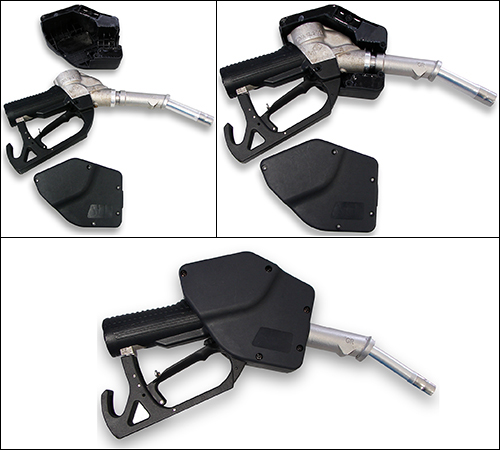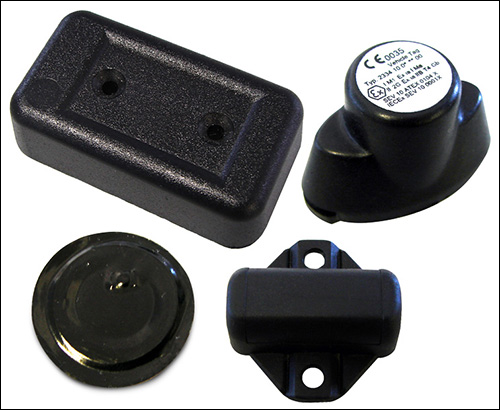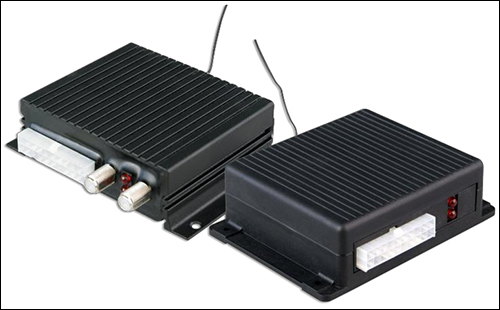HID Global has released a set of components known collectively as identiFUEL that it says will enable fuel-management system (FMS) providers to further automate their offerings for managing fueling processes. IdentiFUEL employs passive low-frequency (LF) 125 kHz RFID technology and is designed to enable cashless fueling of a company’s vehicle fleets, prevent fraud and contamination (such as a driver using the wrong fuel), and accurately track when fuel is taken, which vehicle operators have done so and the volume of fuel being consumed.
IdentiFUEL is the commercialized version of a set of RFID-based fuel-management components that HID Global acquired in late 2015 from South African company identiTAG. Since 2002, identiTAG customers worldwide had been using those components to track fuel use in their vehicle fleets, but the system is now exclusively available under the HID brand. HID Global demonstrated the identiFUEL system at the RFID Journal LIVE! conference and exhibition, held earlier this month in Orlando, Fla.

After offering identiTAG components to a few customers throughout the past few years, HID Global decided to commercialize the technology for use as a general standard platform, says Richard Aufreiter, the company’s product-management director for identification technologies.
IdentiFUEL is designed for use by transportation providers, such as bus and taxi companies, as well as by construction, logistics, car-rental, agricultural, government, mining and aviation firms (for monitoring airport vehicles, in the latter cases). The system could also be used at harbors to manage the fueling of land vehicles and boats.

By using HID Global’s identiFUEL technology for fueling automation, Aufreiter says, companies can reduce the transaction time for drivers, who might otherwise need to fill out paperwork. The identiFUEL system automatically captures additional data, such as a driver’s ID number and the vehicle’s engine time running. What’s more, it offers security, since the collected read data will permit the dispensing of fuel only if a driver or vehicle is approved.
The new system features HID Global’s passive LF IdentiFUEL vehicle tags, which are attached to vehicle fuel tanks. The tags are fuel- and water-resistant and will self-destruct if removed after installation. A battery-powered RFID reader, installed on the nozzle of a fueling station’s pump, reads the ID encoded to a vehicle’s tag and transmits that data, via a 433 MHz transmission, to an IdentiFUEL Wireless Controller, which forwards the information to the user’s FMS software system on a server or a local database.
The reader awakens when its built-in motion sensor detects that the nozzle has been removed from the pump. This design enables the reader’s battery to last for approximately three years, Aufreiter reports, assuming 200 minutes of use per day. Once activated, he says, the reader captures the vehicle tag’s ID, which enables the FMS software on the hosted server to identify not only the vehicle being fueled, but also the fuel type appropriate for that vehicle. The FMS software instructs the IdentiFUEL Wireless Controller to release the flow of fuel.
When a driver inserts the nozzle in the tank, the system can determine if the correct fuel (diesel, for instance) is being used for that vehicle, based on the tag’s ID. The solution then either permits or denies the flow of fuel into the vehicle, based on that software-based decision.
Users can also include an identiFUEL Vehicle Unit, for collecting the number of hours of engine operation and the vehicle’s odometer reading. Installed in the vehicle cab, the unit transmits that data to the controller via a 433 MHz signal, at the same time that the controller receives information from the nozzle reader.

All IdentiFUEL Vehicle Control Units come with a built-in LF reader, so if a company has installed a Vehicle Control Unit, it could also install an add-on compact LF RFID reader antenna, typically mounted around the console near the steering wheel. This would enable the company to read the RFID tag in a driver’s ID badge or key fob and thereby link that person with the vehicle and its operation.
All transactions may be stored on the Wireless Controller until retrieved by the FMS software. It is also possible to have the controller simply push the data to the FMS software without being requested to do so.
Companies that provide FMS solutions have rolled out systems featuring identiFUEL’s RFID components around the world. Since November 2011, for instance, Indian manufacturing company Ambuja Cement has been using the technology to provide fuel to truck drivers and track the type and volume of fuel used by each vehicle, Aufreiter says, while storing that data for analytics. And in 2013, Luxembourg transportation company Emile Weber attached the 125 kHz RFID tags to 350 buses, with corresponding readers installed in the pump nozzles used to fuel those vehicles. Emile Weber’s goal was to reduce the amount of time that employees spent on fueling, as well as the cost of wasted fuel.
Düsseldorf Airport adopted the technology in order to simplify how it monitored the amount of fuel consumed by apron vehicles. The airport had previously employed a manual paper-based log system. Galahad Enterprises, a transportation company in Russia, has been using the technology since 2014 to track the amount of fuel used by each of its vehicles and drivers. The system, in this case, had to be rugged enough to sustain extremely cold temperatures.
The German city of Konstanz has been utilizing the technology since 2009 to automate the refueling of city buses as they return to the garage. The city’s goal was to simplify the fueling process and improve the management of data regarding the specific vehicles being fueled, as well as when this took place and how much fuel was required. Finally, Hungarian State Railways equipped 44 of its filling stations with the RFID technology in 2013 to make refueling faster, and to gain visibility into which train is being refueled at any given time, and by whom.


